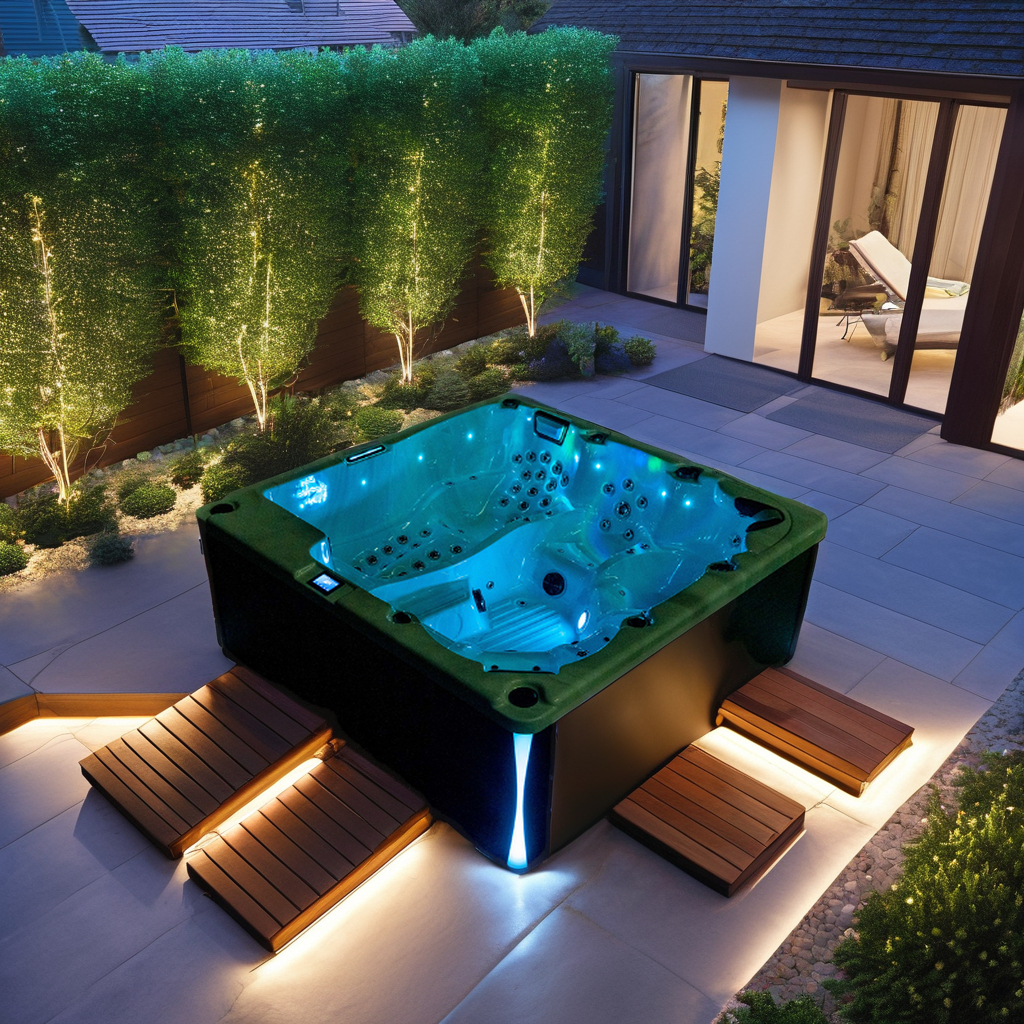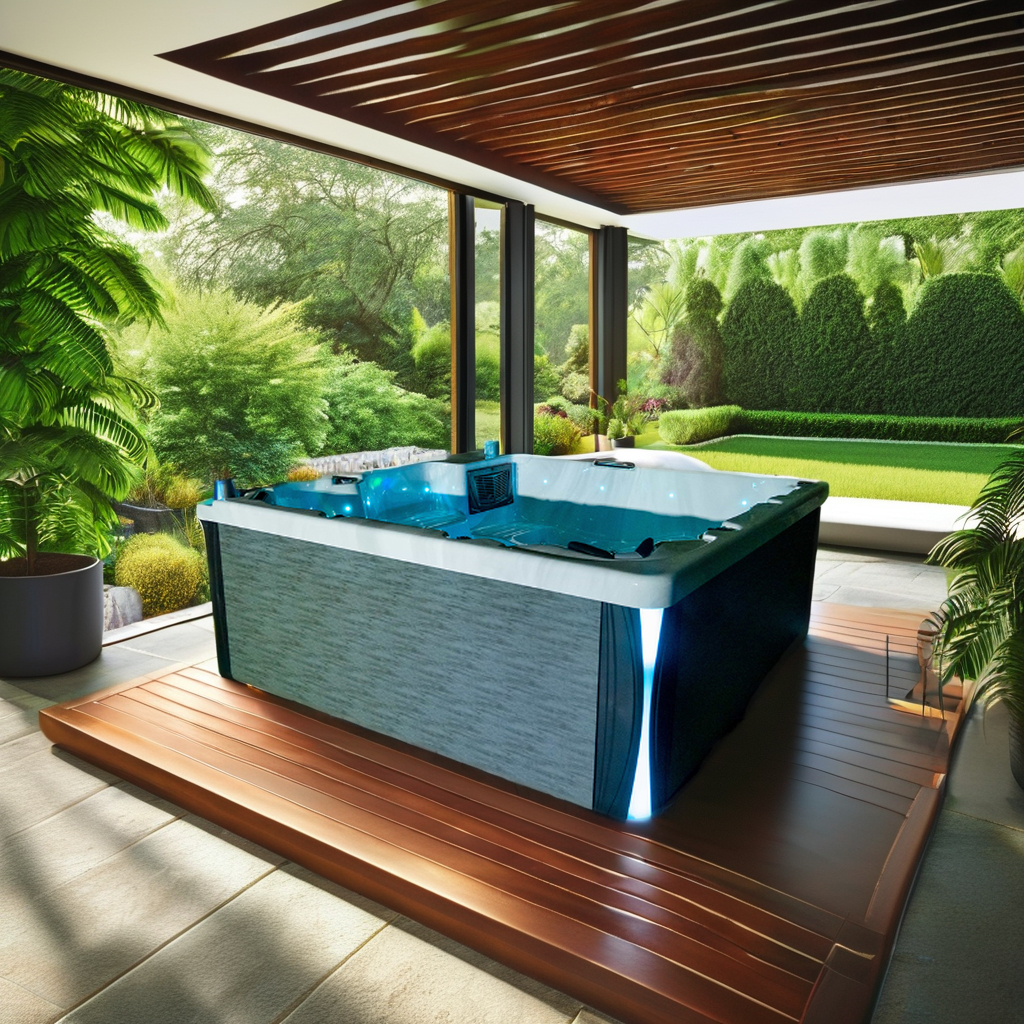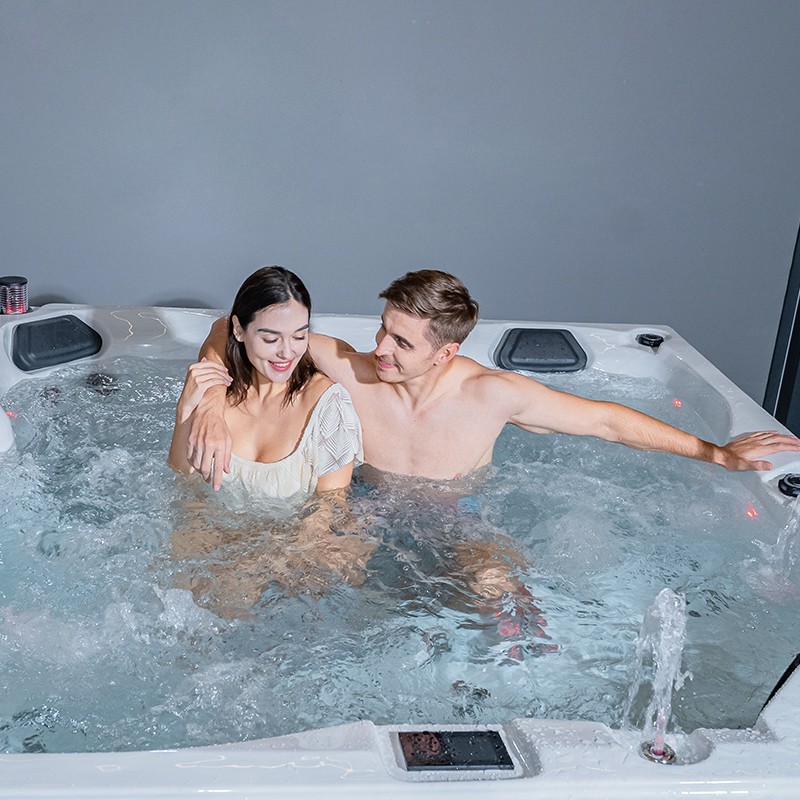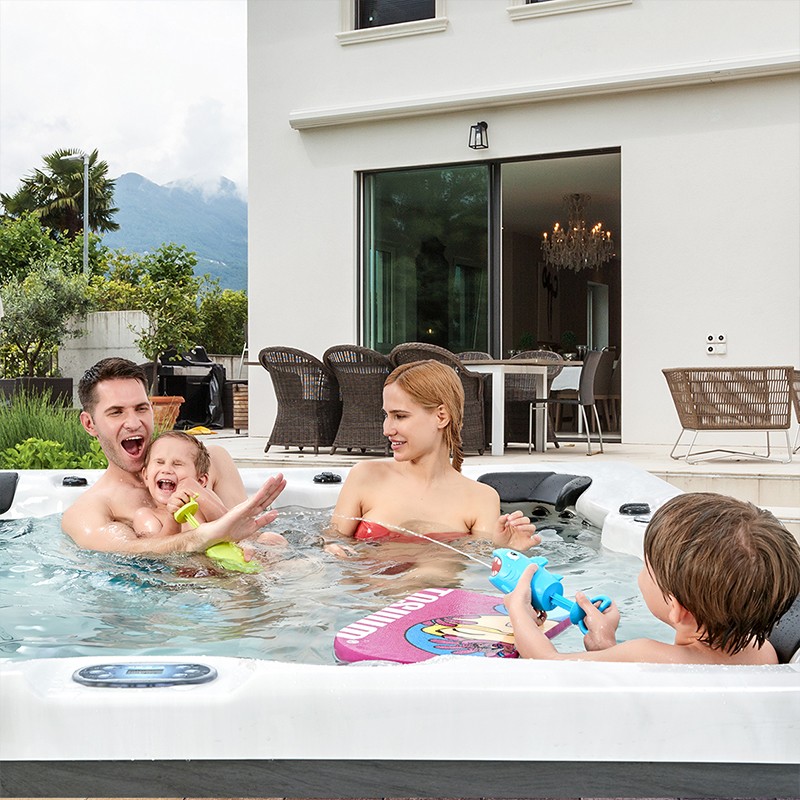
Why add baking soda to an outdoor spa hot tub?
2025-10-22 15:35As a modern home relaxation therapy device, outdoor spa hot tubs combine hydrotherapy massage, constant temperature heating, and air bubble circulation technologies to provide users with physical and mental benefits such as muscle relaxation, improved blood circulation, stress reduction, and sleep-inducing benefits. However, during daily maintenance and use, maintaining clean water and a stable operating environment are particularly important.
Among many water treatment ingredients, baking soda (chemical name: sodium bicarbonate, NaHCO₃) is widely used to regulate water quality in outdoor spa hot tubs. It is not only a common food additive in the kitchen but also an essential building block in chemical experiments and medical care.
Many users may be curious: Why does such a "household" material frequently appear in outdoor spa hot tub maintenance recommendations? What is the scientific logic and system value behind adding baking soda to outdoor spa hot tubs?
This article will explore the real reasons and practical benefits of adding baking soda to outdoor spa hot tubs from the perspectives of chemical structure, water quality management, equipment protection, skin health, pH adjustment, and cost-effectiveness.

Basic Properties of Baking Soda
Before understanding its specific effects, we need to first understand its fundamental properties.
1. Chemical Properties
Baking soda is a weakly alkaline inorganic salt with the chemical formula NaHCO₃. It possesses the following basic characteristics:
· Easily soluble in water;
· Dissolved, it becomes alkaline, with a pH of approximately 8.3;
· Neutralizes acids;
· Has a certain buffering capacity;
· Has a mild cleansing and disinfecting effect.
These properties make baking soda excellent for water quality conditioning and microbial control, which are key chemical properties required for outdoor spa hot tub water treatment.
Baking Soda's Effect on Outdoor Spa Hot Tub Water Quality
Water is the essential medium for the operation of outdoor spa hot tub systems. Stable water quality determines the lifespan of the equipment, the user experience, and the health of the user. Baking soda's role in regulating water quality is primarily reflected in the following aspects:
1. pH Adjustment
The ideal pH range for outdoor spa hot tubs is 7.2-7.8. Excessively acidic water (pH < 7.2) may:
· Irritate skin and eyes;
· Corrode metal parts;
· Reduce the effectiveness of disinfectants like chlorine;
· Damage or discolor the tub lining.
Baking soda is a weak alkaline substance. When added to highly acidic water, it neutralizes free hydrogen ions (H⁺), raising the pH to the ideal range and effectively preventing acidic corrosion and discomfort.
2. Increases Alkalinity (TA)
Alkalinity is an important indicator of water's resistance to pH fluctuations. If alkalinity is too low, pH fluctuates easily, leading to frequent and inconvenient adjustments. Dissolving baking soda significantly increases total alkalinity, increasing the water's buffering capacity against external disturbances and ensuring more stable water quality in outdoor spa hot tubs.
Every 100 grams of baking soda added can increase the alkalinity of approximately 1,000 liters of water by 7-10 ppm, with predictable and controllable performance.

Baking soda protects equipment and systems
In addition to regulating water quality, baking soda can indirectly or directly protect the hardware systems of outdoor spa hot tubs, extending their service life and reducing maintenance costs.
1. Preventing Metal Corrosion
Slightly acidic water can corrode metal tubing, nozzles, heat exchangers, and other components within the tub, particularly alloys like copper, iron, and stainless steel. By maintaining an alkaline environment, baking soda effectively prevents the formation of a corrosive water environment and extends the life of metal components.
2. Slowing Down Scale Deposition
Although high alkalinity (pH > 8.0) increases the tendency of calcium and magnesium ions to precipitate, moderate use of baking soda (maintaining a pH between 7.2 and 7.8) helps maintain a balanced mineral balance in the water and prevent scale deposits in heating pipes and showerheads. Furthermore, because baking soda does not contain calcium, its addition will not cause calcium carbonate precipitation, making it gentler and safer than some hard water conditioners.
3. Reduced Equipment Operation and Maintenance Costs
When water quality is unstable, the system must frequently initiate disinfection, drainage, and dosing procedures, which is not only time-consuming and labor-intensive, but also accelerates equipment aging. Baking soda enhances buffering capacity, stabilizing water quality, reducing the frequency of additional operations and maintenance, and thus lowering labor and operating costs.

Baking soda improves user experience and skin health
An important function of outdoor spa hot tubs is direct contact with the user's skin and respiratory system, making water quality crucial to human health. Baking soda's role in this regard cannot be underestimated.
1. Soothes Skin Irritations
Many users experience skin irritation, itching, redness, and swelling when water quality is unbalanced (especially when the pH is too acidic or when there is excess residual chlorine). Baking soda, as a weakly alkaline substance, has excellent anti-irritant properties. Its mild neutralizing properties can alleviate skin problems caused by disinfectant residue or acidic imbalances in water.
2. Exfoliation and Water Softening
Baking soda granules dissolve in water to form a slightly alkaline ionic liquid, providing a mild exfoliating effect. They gently cleanse dead skin cells without damaging the skin, enhancing bathing comfort.
In addition, baking soda reduces free calcium and magnesium ions in the water, making the water softer and silkier.
3. Odor Improvement
Certain impurities in water (such as urea and ammonia compounds) can release odors when exposed to high temperatures. Baking soda can neutralize some of these acidic odor sources and reduce the formation of chloramines, keeping the water in your outdoor spa hot tub fresh and odor-free.
How to Use Baking Soda and Precautions
While baking soda is highly effective, proper application and proper management are crucial. The following are standard usage recommendations:
1. Dosage Recommendations
· The amount to be added each time should be determined based on the water volume, current pH, and TA value.
· It is generally recommended to not exceed 200 grams per 1000 liters of water.
· After adding, wait at least 4 hours and retest the water quality to determine whether additional additions are necessary.
2. Addition Method
· Pre-dissolve the baking soda in hot water in a bucket.
· With the pump running and the water circulating, slowly pour the mixture into the bathtub.
· Continue to run the circulation system for 1 hour after addition to ensure thorough and even distribution.
3. Precautions
· Avoid excessive use to prevent a rapid rise in pH.
· Avoid adding it simultaneously with strong acidic agents (such as dry powder chlorine or chlorine granules) to prevent uncontrolled neutralization reactions.
· Store in a cool, dry place, away from moisture or strong acids.
Synergy and Comparison with Other Water Treatment Products
In addition to baking soda, other water quality control products on the market include sodium chloride, sodium carbonate, chlorine preparations, and pH enhancers. Baking soda offers the following advantages:
Project | Baking soda | Chlorine Tablets/Disinfectant | pH Enhancer | Sodium Carbonate |
Low cost | ✅ | ❌ (Medium to High) | ❌ | ✅ |
| Strong buffering capacity | ✅ | ❌ | ❌ | Medium |
| Mild-to-moderate | ✅ | ❌ (High Irritation) | Medium | ❌ (Strong Alkalinity) |
| Safe operation | ✅ | ❌ (Aspiration precautions required) | ✅ | ❌ (Gloves Required) |
| Wide applicability | ✅ | ✅ | ✅ | ❌ (Precise Control Required) |
As a well-balanced, cost-effective, and low-risk additive, baking soda is an ideal choice for routine outdoor spa hot tub maintenance.

What payment methods and shipping options does LOVIA SPA offer?
LOVIA SPA provides flexible international payment methods, primarily T/T with a 30% deposit and 70% before shipment, ensuring secure transactions for wholesale and retail orders. After receiving the deposit, products are shipped within 30 days from Huangpu Port, China.
Buyers can access factory quotes, low prices, promotions, and bulk purchasing options when buying directly from LOVIA SPA. Our products feature premium components from Aristech, Balboa, and LX, and are certified with CE, ETL, SAA, ROHS, REACH, and ISO9001.
